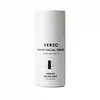What's inside
What's inside
 Key Ingredients
Key Ingredients

 Benefits
Benefits

 Concerns
Concerns

 Ingredients Side-by-side
Ingredients Side-by-side

Water
Skin ConditioningCaprylic/Capric Triglyceride
MaskingHydrogenated Lecithin
EmulsifyingPentylene Glycol
Skin ConditioningSimmondsia Chinensis Seed Oil
EmollientGlycerin
HumectantPalmitic Acid
EmollientC12-16 Alcohols
EmollientSqualane
EmollientPalmitoyl Glycine
CleansingRetinyl Retinoate
Skin ConditioningCurcuma Longa Root Extract
MaskingCeramide NP
Skin ConditioningTocopheryl Acetate
AntioxidantMagnesium Palmitoyl Glutamate
Skin ConditioningTetrahydrodiferuloylmethane
AntioxidantTetrahydropiperine
Skin ConditioningCanola Oil
EmollientPalmitoyl Proline
Skin ConditioningPseudostellaria Heterophylla Extract
Sodium Palmitoyl Sarcosinate
CleansingXanthan Gum
EmulsifyingAcrylates/C10-30 Alkyl Acrylate Crosspolymer
Emulsion StabilisingCaprylyl Glycol
EmollientSodium Hydroxide
BufferingPropanediol
SolventCaprylhydroxamic Acid
Tocopherol
AntioxidantHelianthus Annuus Seed Oil
EmollientParfum
MaskingWater, Caprylic/Capric Triglyceride, Hydrogenated Lecithin, Pentylene Glycol, Simmondsia Chinensis Seed Oil, Glycerin, Palmitic Acid, C12-16 Alcohols, Squalane, Palmitoyl Glycine, Retinyl Retinoate, Curcuma Longa Root Extract, Ceramide NP, Tocopheryl Acetate, Magnesium Palmitoyl Glutamate, Tetrahydrodiferuloylmethane, Tetrahydropiperine, Canola Oil, Palmitoyl Proline, Pseudostellaria Heterophylla Extract, Sodium Palmitoyl Sarcosinate, Xanthan Gum, Acrylates/C10-30 Alkyl Acrylate Crosspolymer, Caprylyl Glycol, Sodium Hydroxide, Propanediol, Caprylhydroxamic Acid, Tocopherol, Helianthus Annuus Seed Oil, Parfum
Ingredients Explained
These ingredients are found in both products.
Ingredients higher up in an ingredient list are typically present in a larger amount.
Canola Oil is Rapeseed oil with low amounts of erucic acid. It is an emollient and helps hydrate the skin. Emollients help hydrate and soften your skin by trapping moisture.
The comedogenic rating of canola oil is 4.
Canola oil contains Vitamin E, Vitamin K, and fatty acids such as linoleic acid.
Learn more about Canola OilThis ingredient is an emollient, solvent, and texture enhancer. It is considered a skin-softener by helping the skin prevent moisture loss.
It helps thicken a product's formula and makes it easier to spread by dissolving clumping compounds.
Caprylic Triglyceride is made by combining glycerin with coconut oil, forming a clear liquid.
While there is an assumption Caprylic Triglyceride can clog pores due to it being derived from coconut oil, there is no research supporting this.
Learn more about Caprylic/Capric TriglycerideRetinyl Retinoate is a new member of the retinoid family. It is created by combining retinoic acid (aka Tretinoin) and retinol.
Upcoming research shows this ingredient to be as effective but less irritating than retinol. Retinoids are the anti-aging gold standard of the skincare world.
All retinoids are inactive until they are converted into retinoic acid, a biologically active drug.
Retinoids undergo a conversion process until it reaches the last step, which is retinoic acid. Therefore, retinoic acid/Tretinoin is the most effective of all retinoids because it does not need to be converted.
Retinyl Retinoate is immediately broken down into retinoic acid and retinol, therefore becoming active right away.
Retinoids are best used to:
Further research is needed for this upcoming ingredient, but the results look promising so far.
Learn more about Retinyl RetinoateTocopherol (also known as Vitamin E) is a common antioxidant used to help protect the skin from free-radicals and strengthen the skin barrier. It's also fat soluble - this means our skin is great at absorbing it.
Vitamin E also helps keep your natural skin lipids healthy. Your lipid skin barrier naturally consists of lipids, ceramides, and fatty acids. Vitamin E offers extra protection for your skin’s lipid barrier, keeping your skin healthy and nourished.
Another benefit is a bit of UV protection. Vitamin E helps reduce the damage caused by UVB rays. (It should not replace your sunscreen). Combining it with Vitamin C can decrease sunburned cells and hyperpigmentation after UV exposure.
You might have noticed Vitamin E + C often paired together. This is because it is great at stabilizing Vitamin C. Using the two together helps increase the effectiveness of both ingredients.
There are often claims that Vitamin E can reduce/prevent scarring, but these claims haven't been confirmed by scientific research.
Learn more about TocopherolTocopheryl Acetate is AKA Vitamin E. It is an antioxidant and protects your skin from free radicals. Free radicals damage the skin by breaking down collagen.
One study found using Tocopheryl Acetate with Vitamin C decreased the number of sunburned cells.
Tocopheryl Acetate is commonly found in both skincare and dietary supplements.
Learn more about Tocopheryl Acetate